Motorola Moto G Review
by Brian Klug on December 18, 2013 2:00 PM EST- Posted in
- Smartphones
- Motorola
- Mobile
- *VA
- Cortex A7
- snapdragon 400
- Moto G
Motorola has embraced relatively stock Android since the launch of Moto X. I originally disliked how the Moto X wasn’t really stock, (cue the philosophical discussion about what stock really means), but truth be told the software preload is devoid of what I don’t like about the skinned, operator-adulterated stuff we’d get otherwise. It strikes perhaps the optimal balance between the two, what works is left intact, what tweaks there are seem to be the bare minimum to appease operators and make the experience better for the majority of users.
The Moto G doesn’t deviate from that formula. At launch, the Moto G comes running Android 4.3, the latest possible version supplied by Qualcomm for the platform inside.
Motorola has promised an update to Android 4.4 KitKat in January (probably near the end of the month), this aligns with the software roadmaps I’ve caught glimpses of. Remember that Motorola is still effectively an OEM and subject to the software release cadences of its silicon suppliers.
The Moto G’s unlocked and operator-free status makes it subject to a bit less than the operator-attached variants of the Moto X I’ve played with, like the AT&T address book and status indicator branding. On the Moto G there’s none of that, just the few tweaks that Motorola has added in, like Device ID, Assist, Migrate, Care, and of course their own camera application.
The delta between the Moto X and G on the software front really comes down to subtraction of features it lacks the hardware for. Specifically the Active Display notifications and interface which used a TI MSP430 and leveraged an AMOLED display, and the always-on voice activation (“OK Google Now”) which used a TI C55x DSP. It’s an easy to understand differentiation point between the two products that I can’t complain about, and although I enjoyed those two features, their absence doesn’t really dilute the software choices that make the Moto G enjoyable.
Moto G also adds an FM radio over Moto X. Inclusion of FM radio is something which remains oddly is absent from most flagship handsets, but a must have on the lower end devices.
Just like the Moto X, the bulk of these applications (Camera, FM radio, Boot Services) are updatable over the Play Store. Motorola has effectively decoupled a bunch of their own first party applications from the normal OTA process.
Again I can’t complain about Motorola’s software strategy for the Moto G. I almost hesitate to make the comparison, but Nexus ends up making flagships that are very competitive on cost in the high end segment, the space Moto G is competing in is entirely different. Having Android 4.3 and the promised upgrade to 4.4 within essentially a month is great, but real proof of Motorola’s commitment will be in continued software support beyond that update.


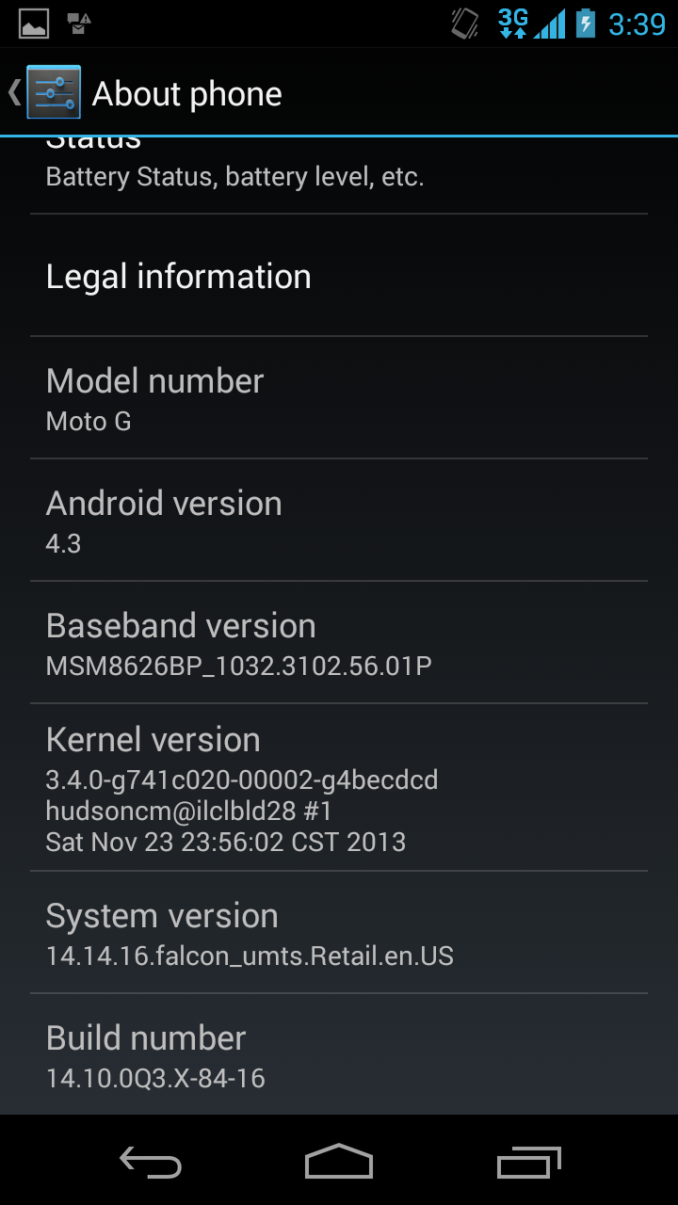
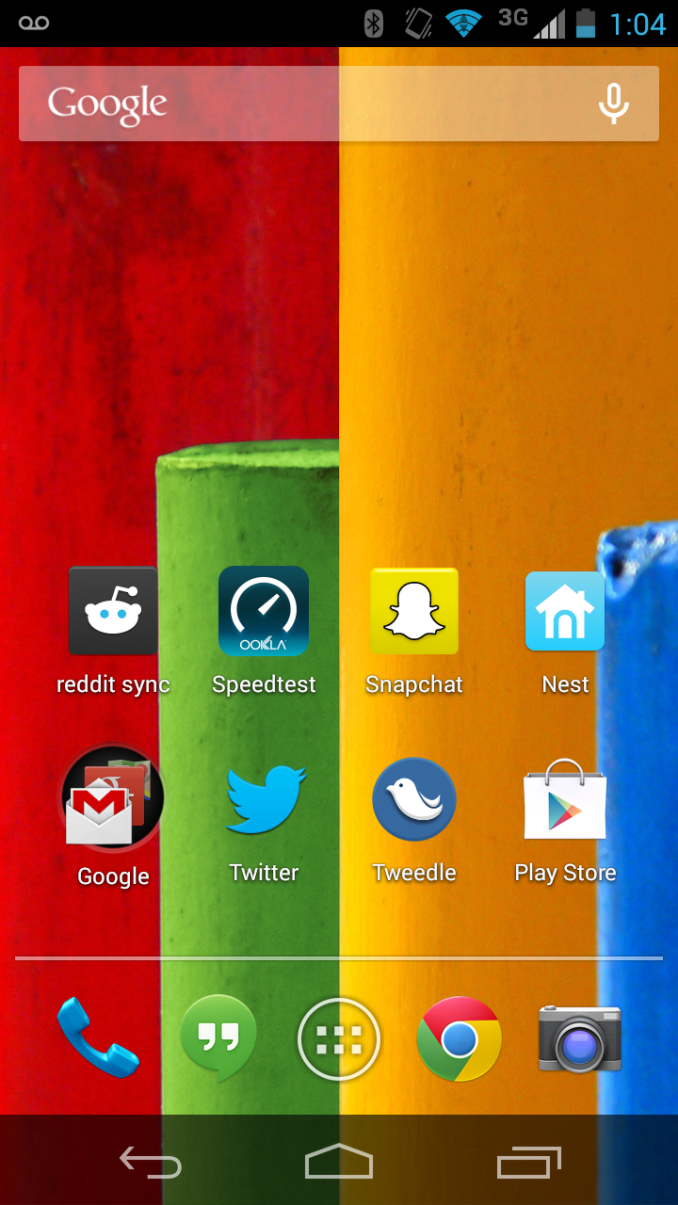
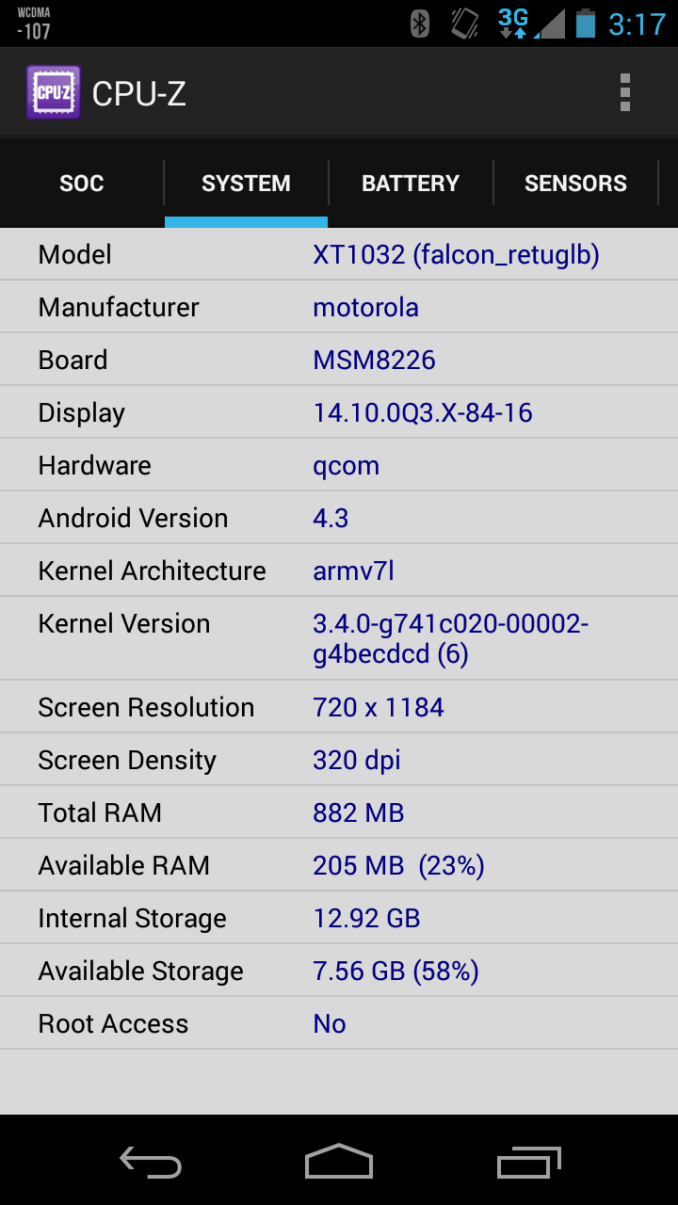
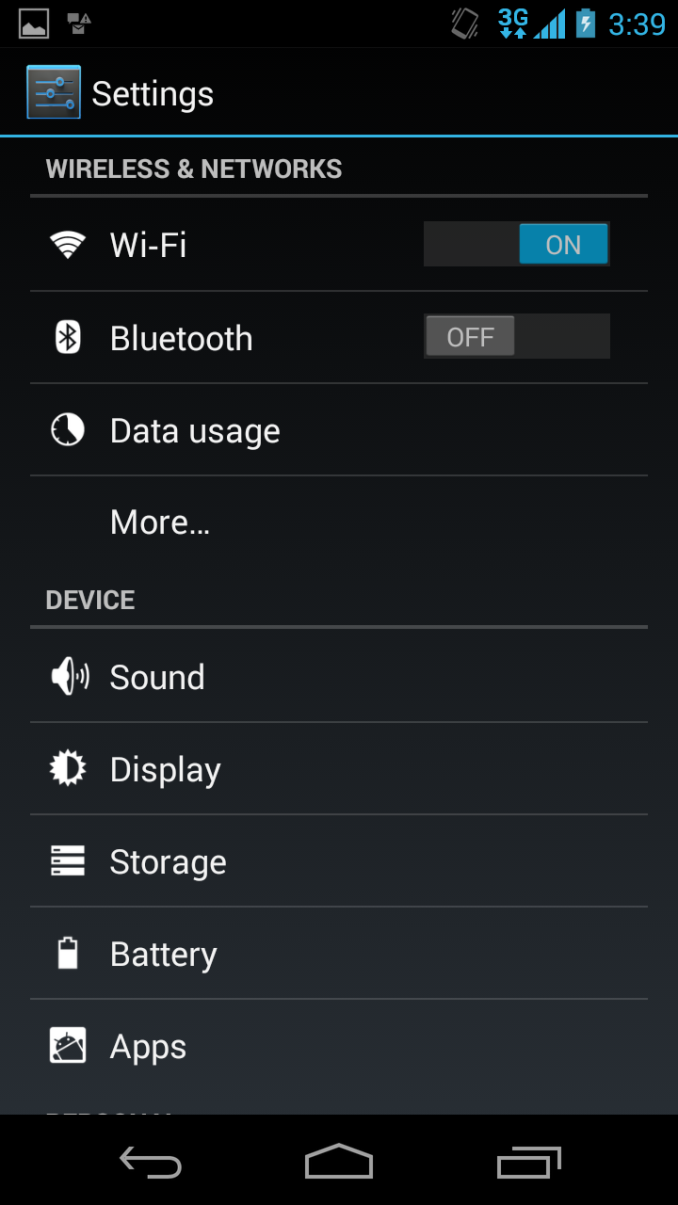
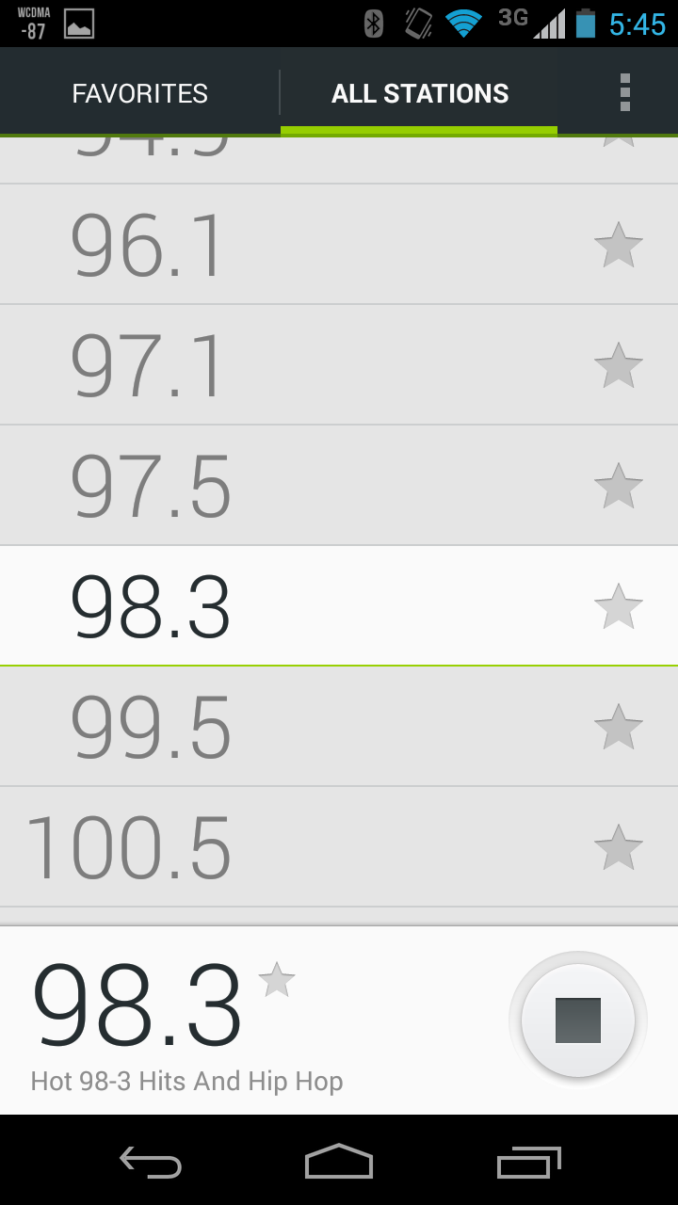
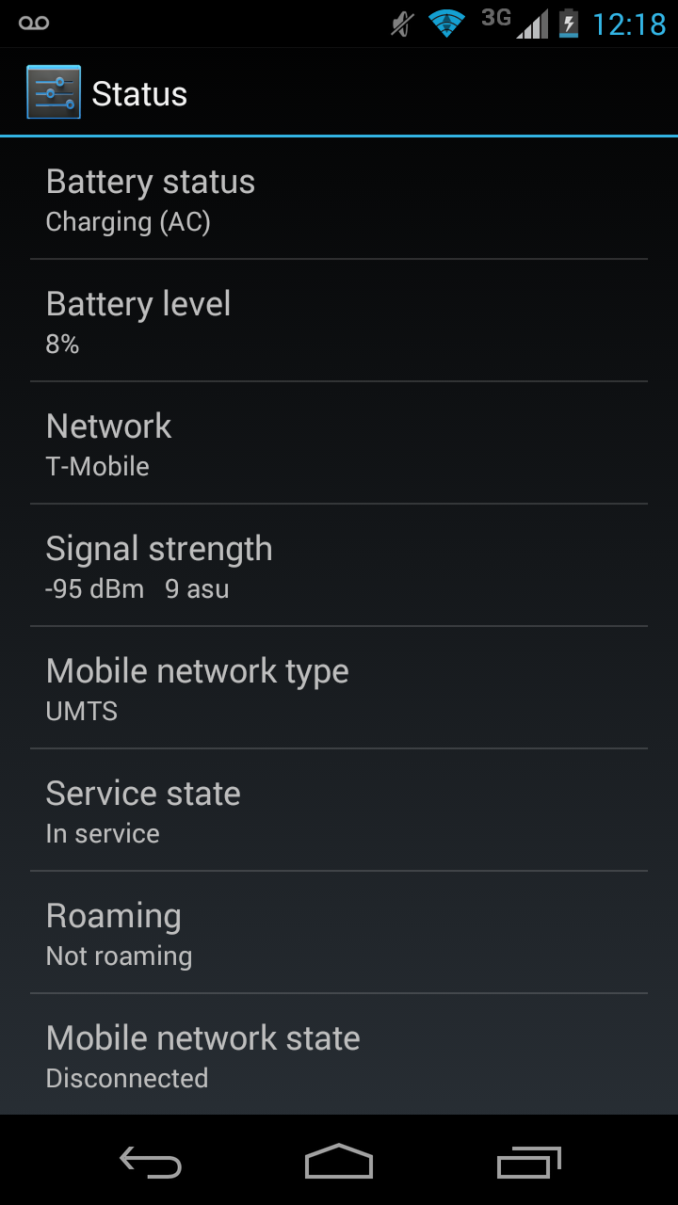








120 Comments
View All Comments
uhuznaa - Wednesday, December 18, 2013 - link
Even my 8 GB Nexus 7 has a two GB left. Lots of storage is convenient for the lazy and the horders, but in now way something that makes or breaks a device for "normal" use. "3-4 GB of music" is about 1000 songs. Yeah, more is better, always, but don't make this into more of a limitation than it actually is. Most people don't care very much anyway.apertotes - Wednesday, December 18, 2013 - link
a tablet is not at all like a phone. a tablet sits at home mostly, with WiFi and instant access to hundreds of online services. A phone goes with you everywhere, even places without -gasp- internet. And most people care, indeed, and that is why they buy galaxies instead of ones.Bob Todd - Wednesday, December 18, 2013 - link
Do you have any proof that the majority of Galaxy S* buyers do so because of micro-SD or removable batteries? Survey data from a reasonable cross section of buyers? I like both of those features, but the idea that it is the main driver of Samsung's success with that line doesn't seem to be grounded with any facts. I'd assume marketing plays the biggest role, along with actually building a solid brand behind it (one high end line available on most major carriers updated once per year). Yes some % of users care a great deal about removable storage and removable batteries, but if you think that's the secret to their success I think you are deluding yourself. And I'm almost sorry I responded at all to the inevitable whining about removable storage. There are other cheap devices that offer those features, be happy that a quality option is available at this price point.apertotes - Wednesday, December 18, 2013 - link
Well, HTC thought the same last year, after their beautiful HTC ONE X beat the Galaxy S3 in every review, but lost badly on sales. "It's the marketing!". They lost another good year blaming marketing, and now are even in worse situation than a year ago. Or do you want to convince me that HTC is not a strong brand? Or Blackberry, for what it is worth.Yes, Samsung sells lots of Aces very cheap, but S3 and S4 and Notes are not cheap. And they outsell almost the rest of high end android devices combined. I really do not think that Samsung is that good at marketing.
Impulses - Wednesday, December 18, 2013 - link
Nope, HTC isn't a very strong brand outside of tech enthusiasts. Samsung/Galaxy is a lot more easily recognized... I had three HTC phones in a row (all the EVOs), very early random people would ask me if they were "the new iPhone" (never mind the massive size difference). Later on most friends would ask "did you get a Galaxy?" when they'd see I have a new phone, never mind it says HTC front and center...Samsung is ABSOLUTELY that good at marketing, have you watched network TV or looked at print magazines lately? Geeks may not do that much anymore but the general public does and Samsung's ad campaign is all over that media, it's impossible to ignore.
sajara - Saturday, December 21, 2013 - link
Indeed you're absolutely right. Samsung is a very powerful brand just about everywhere due to marketing. That, produces free publicity through brand awareness and then word of mouth. Even in the Dominican Republic a (developing country) where i go regularly, a sacred Blackberry land, is buying in bulk Galaxy(s) and why? Huge billboards everywhere and all 4 carriers selling just about every model.sajara - Saturday, December 21, 2013 - link
I was referring to Impulse's post btw...Bob Todd - Wednesday, December 18, 2013 - link
Again, what proof do you have to the contrary? Like I said, I'm sure some % of their user population does buy the Galaxy line _specifically_ for micro-SD and a removable battery. But I'd put a decent chunk of change on the size of that % being 1 in every 5 buyers or less. You think all those buyers of a mainstream device (who have no idea what SOC is in their phone or even what a SOC is) are walking into their carrier's stores with a 64GB micro-SDXC card full of stuff? There is a lot more to the success of the Galaxy line than removable batteries and expandable storage.apertotes - Wednesday, December 18, 2013 - link
I do not need to give any proof at all. I am not in the industry, and I could not care less. But it is funny watching people that should really know about this stuff (like HTC spokesperson) blame it all on marketing time after time, and get worse results every year.Also, HTC is a very strong band. A few years ago it was almost a synonym of smartphone, and they also spend a lot of money on advertising and sponsorships.
Anyway, do you have any proof that micro-sd cards are not a strong reason behind massive galaxy sales?
martajd - Wednesday, December 18, 2013 - link
"I don't need to give any proof." Yeah, you do